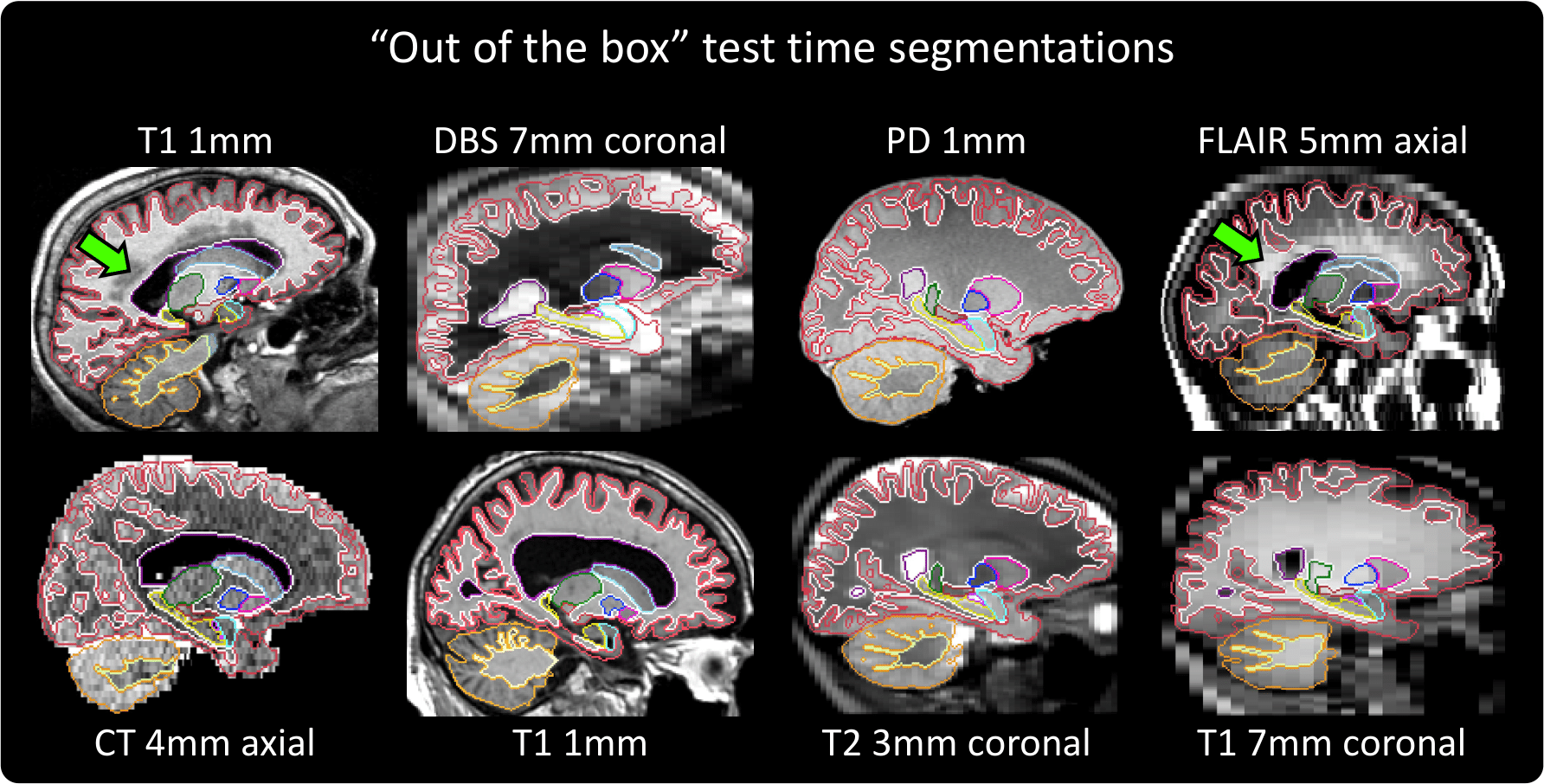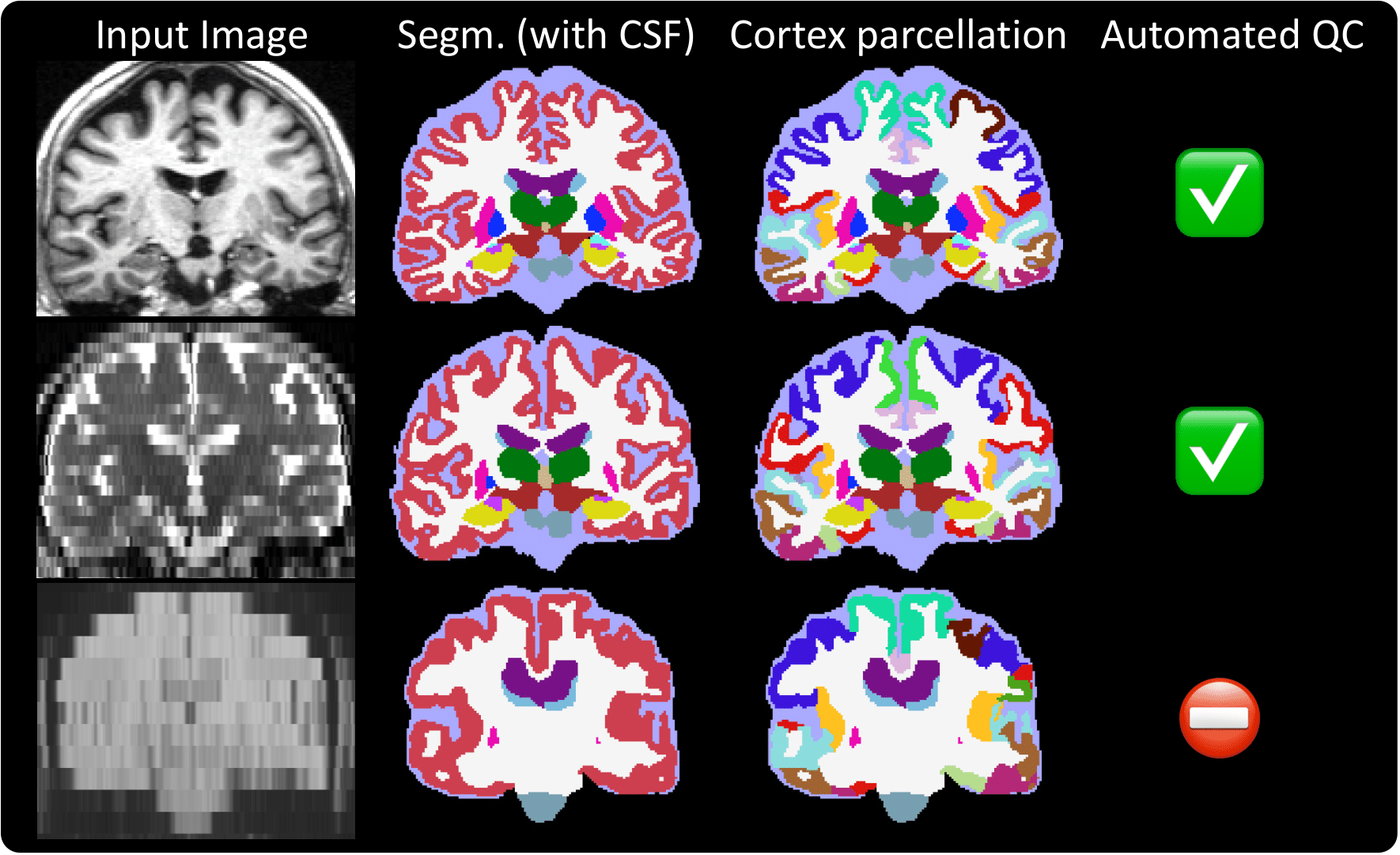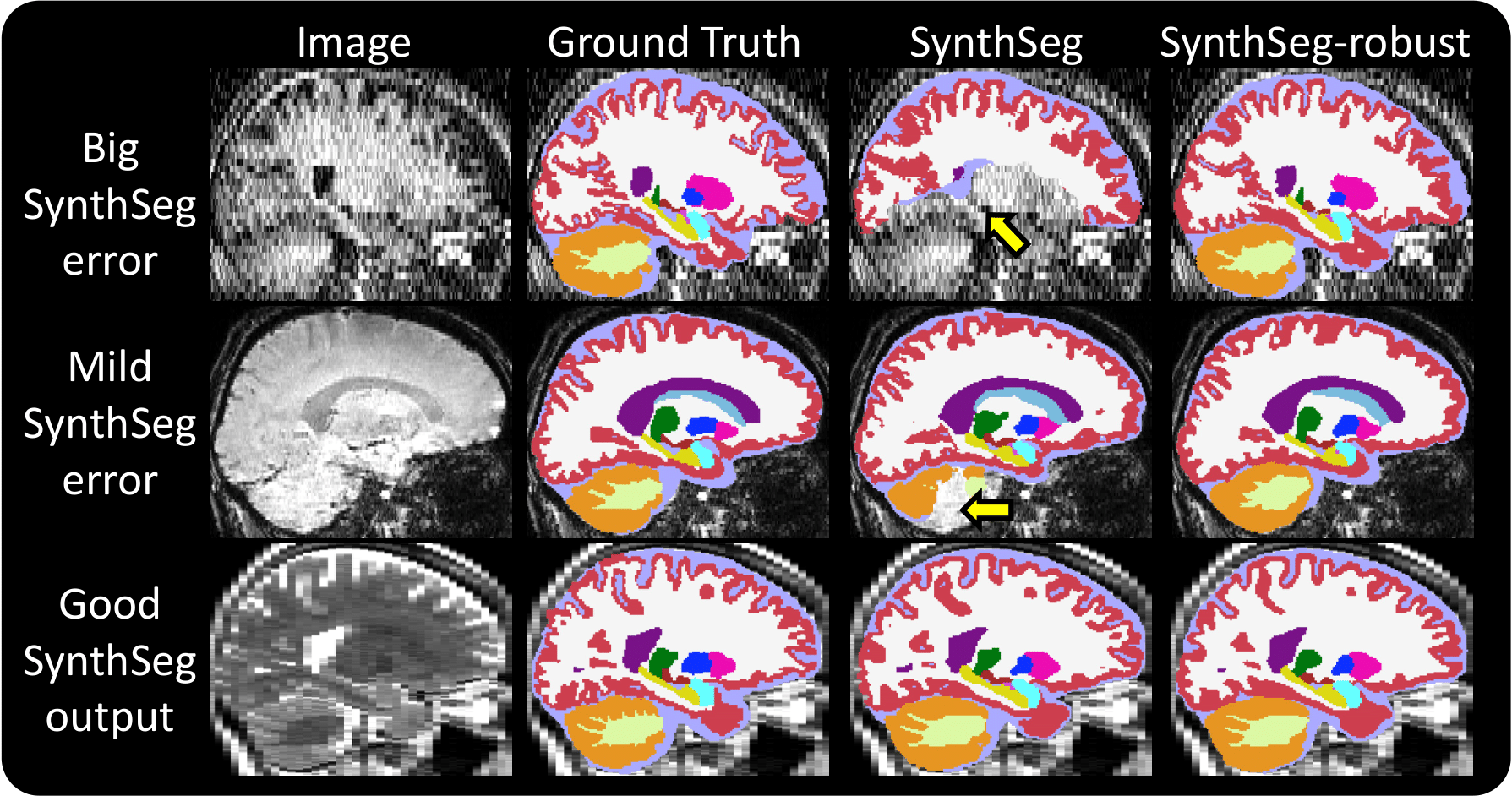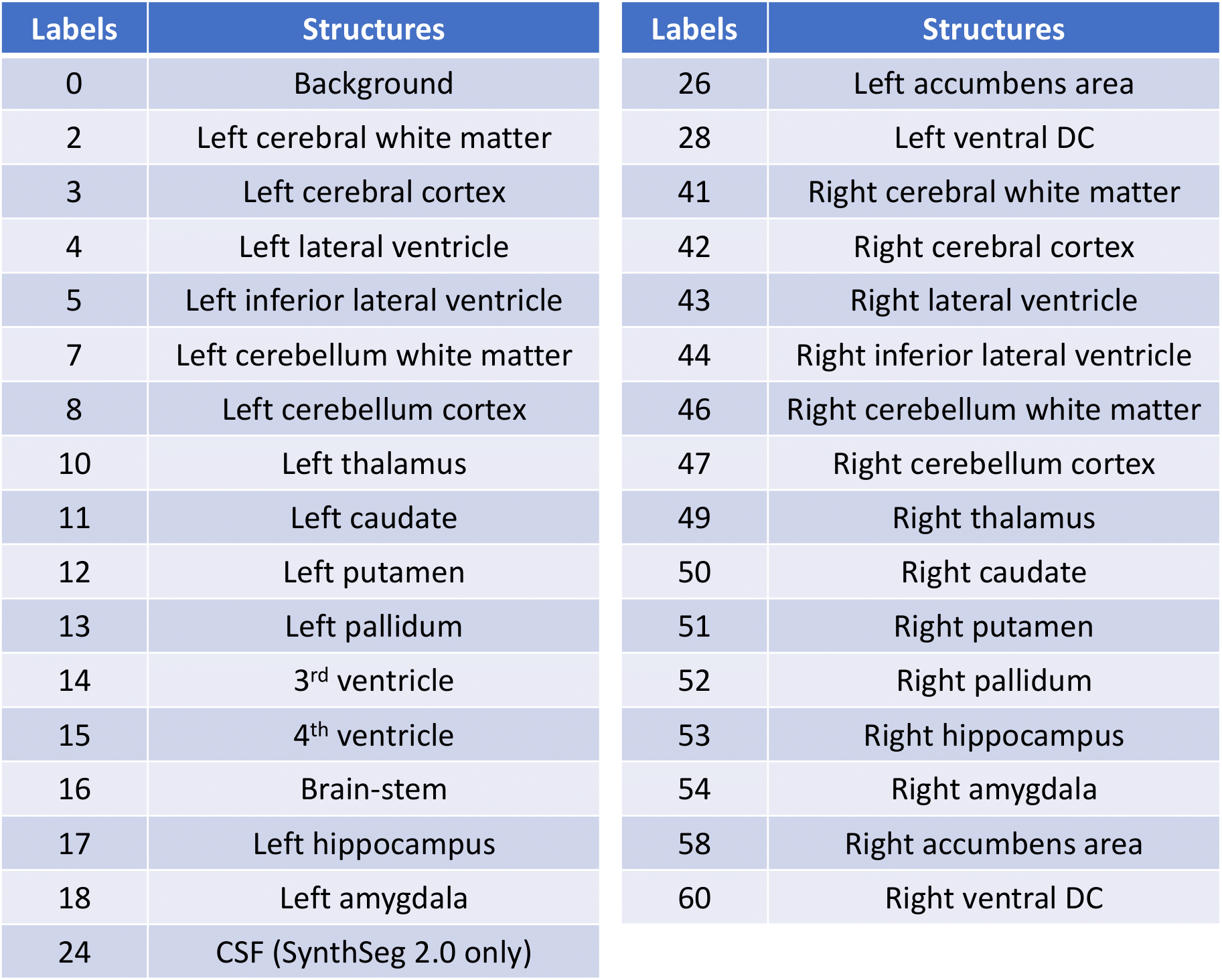| Deletions are marked like this. | Additions are marked like this. |
| Line 96: | Line 96: |
| mri_synthseg --i <input> --o <output> [--parc --robust --fast --vol <vol> --qc <qc> --post <post> --resample <resample> --crop <crop> --threads <threads> --cpu --previous] | mri_synthseg --i <input> --o <output> [--parc --robust --fast --vol <vol> --qc <qc> --post <post> --resample <resample> --crop <crop> --threads <threads> --cpu --v1] |
| Line 112: | Line 112: |
| * ''--previous'': (optional) to run the first version of SynthSeg (SynthSeg 1.0). | * ''--v1'': (optional) to run the first version of SynthSeg (SynthSeg 1.0). |
| Line 115: | Line 115: |
| We note that '''--parc''', '''--robust''', '''--fast''', '''--qc''', '''--previous''', as well as '''input text files''', are only available on development versions from '''June 28th 2022 onwards'''. | We note that '''--parc''', '''--robust''', '''--fast''', '''--qc''', '''--v1''', as well as '''input text files''', are only available on development versions from '''June 28th 2022 onwards'''. |
SynthSeg
This functionality is only available in the development version of FreeSurfer.
Author: Benjamin Billot
E-mail: benjamin.billot.18 [at] ucl.ac.uk
Rather than directly contacting the author, please post your questions on this module to the FreeSurfer mailing list at freesurfer [at] nmr.mgh.harvard.edu
If you use SynthSeg in your analysis, please cite:
SynthSeg: Domain Randomisation for Segmentation of Brain MRI Scans of any Contrast and Resolution. B Billot, DN Greve, O Puonti, A Thielscher, K Van Leemput, B Fischl, AV Dalca, JE Iglesias. Under revision.
For the robust mode (see below), please cite:
Robust Segmentation of Brain MRI in the Wild with Hierarchical CNNs and no Retraining. B Billot, C Magdamo, SE Arnold, S Das, JE Iglesias. Under revision.
Contents
- General Description
- Installation
- Usage
- Frequently asked questions (FAQ)
- List of segmented structures
1. General Description
This tool implements SynthSeg, the first convolutional neural network for segmentation of brain MRI scans of any contrast and resolution that works out-of-the-box, without retraining or fine-tuning. SynthSeg relies on a single model, which we distribute here. This model is robust to:
- a wide array of subject populations: from young and healthy to ageing and diseased subjects with strong atrophy,
- white matter lesions (see green arrows in image below),
- scans with or without preprocessing (bias field corruption, skull stripping, intensity normalisation, registration to template).
The output segmentations are returned at high resolution (1mm isotropic), regardless of the resolution of the input scans. The code can run on the GPU (6s per scan) as well as the CPU (2 minutes per scan). The list of segmented structures can be found at the bottom of this page.

New features (28/06/2022)
SynthSeg 1.0 has now been replaced with SynthSeg 2.0, which offers more functionalities !! These new features are illustrated in the figure below. Specifically, in addition to whole-brain segmentation, SynthSeg is now also able to perform cortical parcellation, automated quality control (QC) of the produced segmentations, and intracranial volume (ICV) estimation computed by including the CSF to the list of segmented structures.

Robust version
While SynthSeg is quite robust, it sometimes falters on scans with low signal-to-noise ratio, or with low tissue contrast (see figure below). For this reason, we developed a new architecture for increased robustness, named "SynthSeg-robust", which can be selected with the --robust flag (see Section 3). You can use this mode when SynthSeg gives results like those in the third column (1st and 2nd rows) of the figure below:

See the table below for a summary of the functionalities supported by each version.

2. Installation
The first time you run this module, it will prompt you to install Tensorflow. Simply follow the instructions in the screen to install the CPU or GPU version.
If you have a compatible GPU, you can install the GPU version for faster processing, but this requires installing libraries (GPU driver, Cuda, CuDNN). These libraries are generally required for a GPU, and are not specific for this tool. In fact you may have already installed them. In this case you can directly use this tool without taking any further actions, as the code will automatically run on your GPU.
3. Usage
You can use SynthSeg with the following command:
mri_synthseg --i <input> --o <output> [--parc --robust --fast --vol <vol> --qc <qc> --post <post> --resample <resample> --crop <crop> --threads <threads> --cpu --v1]
where:
<input>: path to a scan to segment, or to a folder. This can also be the path to a text file, where each line is the path of an image to segment.
<output>: path where the output segmentations will be saved. This must be the same type as --i (i.e., the path to a file, a folder, or a text file where each line is the path to an output segmentation).
--parc: (optional) to perform cortical parcellation in addition to whole-brain segmentation.
--robust: (optional) to use the variant for increased robustness (e.g., when analysing clinical data with large space spacing). This can be slower than the other model.
--fast: (optional) use this flag to disable some postprocessing operations for faster prediction (approximately twice as fast, but slightly less accurate). This doesn't apply when the --robust flag is used.
<vol>: (optional) path to a CSV file where volumes for all segmented regions will be saved. If --i designates an image or a folder, <vol> must be the path to a single CSV file where the volumes of all subjects will be saved. Otherwise, <vol> must be a text file, where each line is the path to a different CSV file where the volumes of the corresponding subject will be saved.
<qc>: (optional) path to a CSV file where QC scores will be saved. The same formatting requirements apply as for the --vol flag.
<post>: (optional) path where the output 3D posterior probabilities will be saved. This must be the same type as --i (i.e., the path to a file, a folder, or a text file).
<resample>: (optional) in order to return segmentations at 1mm resolution, the input images are internally resampled (except if they already are at 1mm). Use this optional flag to save the resampled images. This must be the same type as --i (i.e., the path to a file, a folder, or a text file).
<crop>: (optional) to crop the inputs to a given shape before segmentation. This must be divisible by 32. It can be given as a single (i.e., --crop 160) or several integers (i.e, --crop 160 128 192, ordered in RAS coordinates). The default value is 192. Decrease it for faster analysis or to fit in your GPU. Increase it for input images with large field of view.
<threads>: (optional) number of threads to be used by Tensorflow (default uses one core). Increase it to decrease the runtime when using the CPU version.
--cpu: (optional) to run on the CPU rather than the GPU.
--v1: (optional) to run the first version of SynthSeg (SynthSeg 1.0).
We note that --parc, --robust, --fast, --qc, --v1, as well as input text files, are only available on development versions from June 28th 2022 onwards.
Important: If you wish to process several scans, we highly recommend that you put them in a single folder, or use input text files, rather than calling SynthSeg individually on each scan. This will save the time required to set up the software for each scan.
4. Frequently asked questions (FAQ)
Does running this tool require preprocessing of the input scans?
No! Because we applied aggressive augmentation during training (see paper), this tool is able to segment both processed and unprocessed data. So there is no need to apply bias field correction, skull stripping, or intensity normalisation.
The sum of the number of voxels of a given structure multiplied by the volume of a voxel is not equal to the volume reported in the output volume file.
This is because the volumes are computed upon a soft segmentation, rather than the discrete segmentation. The same happens with the main recon-all stream: if you compute volumes by counting voxels in aseg.mgz, you don't get the values reported in aseg.stats.
What formats are supported ?
This tool can be run on Nifti (.nii/.nii.gz) and FreeSurfer (.mgz) scans.
How can I increase the speed of the CPU version without using a GPU?
If you have a multi-core machine, you can increase the number of threads with the --threads flag (up to the number of cores). Additionally you can also try to decrease the cropping value, but this will also decrease the field of view of the image.
Why are the inputs automatically resampled to 1mm resolution ?
Simply because, in order to output segmentations at 1mm resolution, the network needs the input images to be at this particular resolution! We actually do not resample images with resolution in the range [0.95, 1.05], which is close enough. We highlight that the resampling is performed internally to avoid the dependence on any external tool.
Why aren't the segmentations perfectly aligned with their corresponding images?
This may happens with viewers other than FreeSurfer's Freeview, if they do not handle headers properly. We recommend using Freeview but, if you want to use another viewer, you may have to use the --resample flag to save the resampled images, which any viewer will correctly align with the segmentations.
5. List of segmented structures
Please note that the label values follow the FreeSurfer classification. We emphasise that the structures are given in the same order as they appear in the posteriors, i.e. the first map of the posteriors corresponds to the background, then the second map is associated to the left cerebral white matter, etc.

